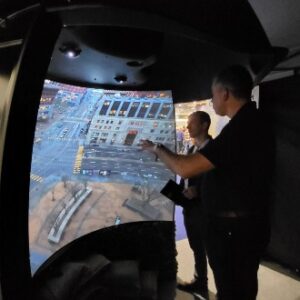AI in AV could SAVe us all
Editor’s Note: This is an ongoing series about sustainable AV from the SAVe organization.
Artificial Intelligence (AI) is on everyone’s mind these days. It is a hot topic across the news and rapidly expanding into the lexicon of everyday life despite the concept of AI being around for almost 88 years, with the first successful program being written in 1951 at Oxford University.
Today, manufacturers are racing to innovate their products to leverage the power of artificial intelligence at a rapid speed that has not been seen since the first Internet of Things (IoT) devices started to appear in the early 2000s. Customers are looking for AI solutions to help streamline their lives or innovate their business, and expect that new products be connected and have AI built in. With these demands, technologies have rapidly advanced in both speed and capability through successive iterations of computing power and memory size, including the use of cloud computing.
These advancements are winding their way deep into the everyday life of humans in virtually all professional and personal use, increasing in numbers exponentially with each advancement and generation. Socially and economically, this has driven a culture of producing technology-laden devices that have newer features, communicate faster and better, lessen mundane tasks, and solve old and new problems, but also create a major issue of electronic waste (e-waste) with new features and shorter product life and even more integration of materials to handle AI integration and adoption. This adds to the already troubling global e-waste problem with no signs of slowing down, generating an estimated 74.8 million tons by 2030 and depleting the world’s supply of virgin raw materials to make electronics to almost nothing.
Automated E-Waste Solution

Can AI be the savior of itself and resolve the exploding e-waste issue? It just might be the application that can. If there is one great thing about modern AI technologies is its ability to learn and execute rapidly across a host of variables at speeds that no human can achieve.
There are four areas to this life cycle 360-approach that can work in the favor of continuing advancement while solving some challenging issues with any rapid technological advancement.
Sourcing AI in AV
Starting with sourcing of raw materials for technology. This is more than virgin raw materials in the ground, but includes mining raw materials from existing landfills, the bottom of the ocean (where unfortunately a large amount sits), or even in outer space. Mining companies would use AI to track and source materials from extraction, through processing and refinement, and then storage and shipping to develop strategies that reduce the carbon footprint of the current processes and yield greater quantities of products to manufacturers. Many current industries, including the timber and oil industries, already use these types of sourcing, processing, and conveying algorithms for streamlining their industries to maximize their profitability and increase market shares. Additionally, many countries are requiring reduced carbon footprints of raw material manufacturing as a matter of course in their efforts to be more sustainable.
Manufacturing with AI
A second adjacent area where AI can be a benefit is in the manufacturing of the products themselves. The automotive industry is already deep in generative AI, for example, in designing better automobiles that are more fuel efficient, easier to manufacture, and packed full of features. Technology manufacturers can, and some do, use AI to design and develop not only better products that have more stable life spans and upgradable features, but also resolve challenges in the manufacturing and distribution process by shortening the time to develop, market, and get into the hands of consumers, increasing profitability and volume of sales.
AI is also being leveraged today to build a consumer profile that can help manufacturers target specific customers based on user profiles and market research at speeds and accuracy that traditional means just can’t match. Additionally, AI can be used to develop eco-friendly packaging through generative AI that minimizes damage to goods while reducing packaging size and materials which is a cost savings to the manufacturer and consumer while protecting the environment by eliminating it from the waste stream.
The Consumer
A third area is with the consumer who can take advantage of generative AI not only for the designed use of the products they purchase, but also in sourcing, managing, repairing, and connecting to the user ecosphere. As mentioned above, the user profile being developed by manufacturers can also be used by consumers to determine the best and most efficient technology use within a given profile and be paired with a desire to reduce carbon emissions as part of a personal brand or ethos by selecting only manufacturers that align with the customer’s goals.
Reuse, Reduce, and Repurpose AI in AV

Lastly, working directly with consumers, the e-waste industry has opportunities with the use of AI to dramatically improve the ability to reduce or eliminate e-waste from the waste stream. Leveraging the capabilities of robotics and AI to determine the best way to accept, manage, disassemble, recover, and distribute the materials that are harmful to the environment and necessary to keep the materials in the pipeline with accuracy and speeds that make it both profitable and possible are already generating business opportunities within the market. India is a great place to study this as it supports efforts to clean up their massive e-waste problem as the third largest contributor of e-waste after China and the U.S. as well as being a country with a history of receiving and processing the worlds e-waste in ways that have been detrimental to both the environment and its population.
Embracing the AI revolution while harnessing its power to solve problems of its own making is a global opportunity that ultimately can benefit everyone, not just our planet. This will take a worldwide commitment, Governments to provide incentives, and consumers to demand it to be successful. AI has the power to be its own savior. It just needs a push from humans to do so.









